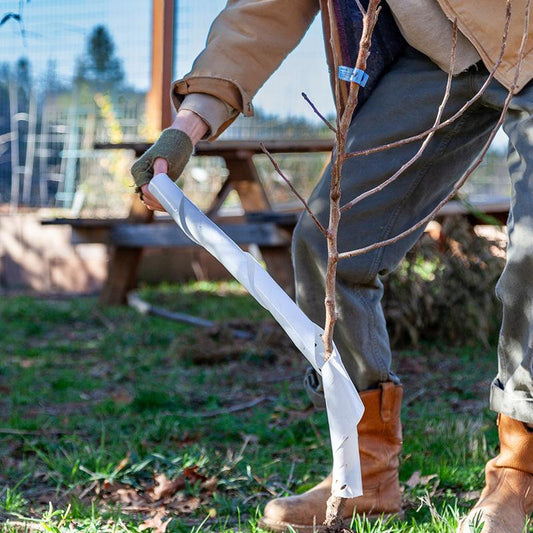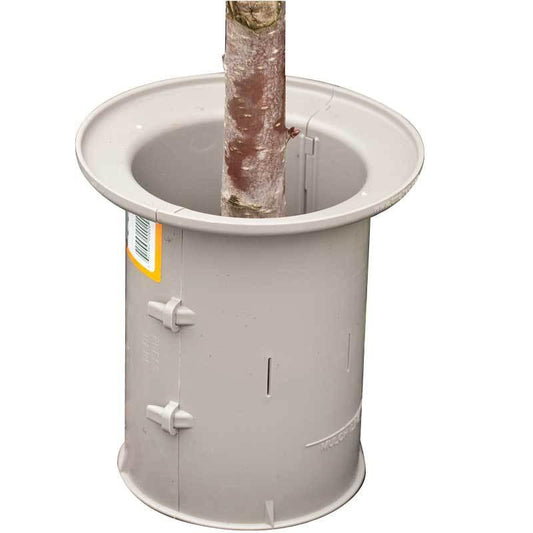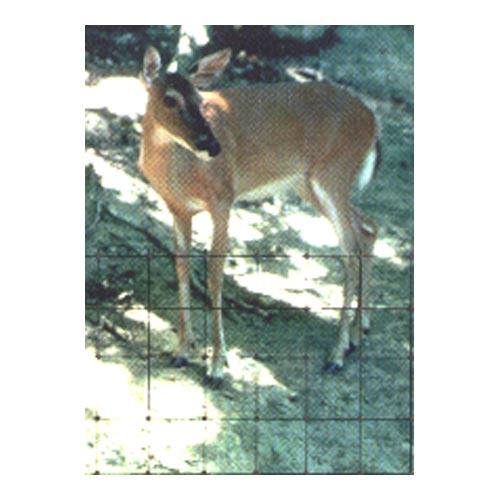Summer is a crucial season for fruit trees. While long, sunny days help trees grow and ripen fruit, they also bring challenges such as pests, sun damage, and water stress. With a little extra care, you can protect your trees from these risks and set the stage for a successful harvest. Here’s how to keep your trees healthy all summer long.
Protecting Your Tree
Trunk Wraps
Tree trunks are vulnerable to various threats, including sunscald, rodent damage, insects, and mechanical harm. Trunk wraps are a simple and effective solution for protecting your trees. Spiral Tree Guards, for example, are affordable and easy to install, offering season-long protection.
If you use a weed eater near your trees, consider protecting the trunks with a Tree and Plant Guard to prevent accidental damage.
Preventing Sunscald
Sunscald occurs when the bark is exposed to intense sunlight, causing cracking or peeling. Protect your trees by painting their trunks with a diluted mixture of interior latex paint and water (1:1 ratio).
- For newly planted trees, apply a single coat of paint from just below soil level to the top of the trunk.
- If the canopy hasn’t grown enough to provide shade by the second year, add another coat.
- For older trees, paint any exposed areas of the trunk or large limbs that are at risk.
Deterring Deer and Large Browsers
Deer and other animals can cause significant damage to young trees by eating leaves, scratching trunks with antlers, or even breaking branches.
- Deer fencing: The most effective way to protect trees from large animals.
- Alternative Deterrents: Motion-activated sprinklers, deer repellent sprays, or glow-in-the-dark “predator” eyes can also help.
Keeping Birds Away
Birds often swoop in just before harvest to eat your fruits. Prevent this by:
- Installing Bird Netting: Cover your trees with netting to block access.
- Using Bird Scare Tools: Bird chaser balloons and reflective tape can deter birds, but these must be rotated weekly to prevent birds from becoming accustomed to them.
Conserving Water
Mounding for Moisture Control
Creating a soil mound around the tree can help keep the root zone moist while preventing excess water from pooling.
-
How to Build a Mound:
- Form a donut-shaped circle around the tree, leaving at least six inches between the mound and the trunk.
- Pack the soil to slow erosion.
- Seasonal Adjustments: Remove the mound during the wet season to prevent overwatering.
Mulching Around Your Tree
Mulch is a gardener’s best friend when it comes to conserving water, suppressing weeds, and regulating soil temperature.
- Best Mulching Materials: Wood chips, straw, cocoa hulls, or pre-cut mulch mats made of coconut coir.
-
How to Mulch:
- Apply a four- to six-inch layer of mulch.
- Start six inches from the trunk to prevent rot.
- Extend the mulch three to four feet outward from the trunk.
- If using drip irrigation, place the tubing beneath the mulch for maximum efficiency.
Watering Wisely
Proper watering is essential for healthy trees, especially during summer. The amount and frequency of watering depend on soil type, weather conditions, and the tree’s age.
For Newly Planted Trees
Young trees require up to 10 gallons of water per week during their first growing season. However, factors such as cool weather or thick mulch may reduce the need for irrigation.
For Established Trees
Older trees need less frequent watering. To determine if your tree is receiving adequate moisture:
- Dig 6–12 inches into the soil and check for moisture with your fingers.
- Use a soil moisture meter with a long probe for more precise measurements.
Tips for Efficient Watering:
- Avoid judging soil moisture by the surface, as it may dry out faster than deeper layers.
- Consider installing a drip irrigation system, which conserves water and ensures consistent moisture.
- If using a mound, fill the well in the center with five gallons of water once or twice a week.
Additional Summer Tree Care Tips
Pruning for Air Circulation
While heavy pruning should be done in winter or early spring, light pruning during summer can improve air circulation and reduce the risk of fungal diseases. Remove any dead, damaged, or overcrowded branches.
Monitoring for Pests
Summer is prime time for pests like aphids, mites, and borers. Inspect your trees regularly and treat infestations promptly with organic or chemical solutions as needed. Integrated Pest Management (IPM) techniques, such as introducing beneficial insects like ladybugs, can also help.
Fertilizing When Needed
If your tree shows signs of nutrient deficiency (yellowing leaves or stunted growth), consider applying a balanced fertilizer. Always follow the manufacturer’s recommendations to avoid over-fertilization.
Why Summer Tree Care Matters
Neglecting your fruit trees during summer can lead to reduced fruit quality, disease outbreaks, and stress that affects future harvests. By taking proactive steps like mulching, watering wisely, and protecting your trees from pests and wildlife, you’ll ensure a healthier, more productive orchard for years to come.
Final Thoughts
With the right care, your fruit trees can thrive throughout the summer, setting the stage for a bountiful harvest. From protecting trunks and conserving water to managing pests and pruning for airflow, these tips will help you maintain healthy trees all season long. Don’t wait—start implementing these practices today to enjoy the rewards of a thriving orchard!










4 comments
Helen, I would just follow the directions on your moisture meter.
If I use a moisture meter for established fruit trees, how deep should it go and what setting indicates enough water? In the middle or all the way to wet? Thank you!
Fadia, have you fertilized it with a good fruit tree fertilizer? It just may need more phosphorus, but best to do a soil test to see what your levels are currently at.
Hi
I plant a mango tree from the seed and now it’s around 12 feet but no fruit what I have to do
Thank you